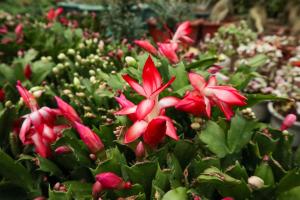What is a Sedum Plant
Introduction
Sedum is a genus of flowering succulent plants that belongs to the Crassulaceae family. There are more than 400 different species of sedum plants, ranging from low-growing ground cover varieties to upright shrubs that can grow up to three feet tall. Sedums have thick, fleshy leaves and clusters of star-shaped flowers that bloom in a range of colors, including pink, red, yellow, and white.
Types of Sedum Plants
There are many different types of sedum plants, each with its own unique characteristics. One of the most popular types of sedum is Sedum reflexum, also known as blue spruce sedum. This variety has blue-green leaves that resemble the needles of a spruce tree. Another popular sedum is Sedum spurium, which is often used as a ground cover due to its low-growing habit and dense, mat-forming foliage.
Sedum spectabile, also known as showy stonecrop, is another popular variety that produces large clusters of pink flowers that bloom in late summer and early fall. Sedum telephium, orpine sedum, is another popular choice, with its upright habit and large, fleshy leaves that turn a rich shade of burgundy in the fall.
Growing and Care Requirements
Sedum plants are easy to grow and care for, making them a popular choice for both novice and experienced gardeners. These plants prefer well-draining soil and require full sun to thrive. They are also drought tolerant, making them an ideal choice for xeriscaping and other low-water gardening techniques.
When growing sedums, it's important to ensure proper air circulation around the plants to prevent fungal diseases. Pruning and deadheading can also help to promote healthy growth and flowering. During the winter months, sedums should be protected from frost and extreme cold by covering them with a layer of mulch or straw.
Uses of Sedum Plants
Sedum plants have a wide range of uses in the garden, from ground cover to accent plantings. They are often used in rock gardens and other low-maintenance landscapes due to their easy care requirements and drought tolerance. Sedums can also be used in container gardens and as border plantings, adding texture and visual interest to any landscape.
In addition to their aesthetic uses, sedum plants are also used in traditional medicine to treat a variety of ailments. The leaves and flowers of certain sedum species are thought to have anti-inflammatory, antispasmodic, and analgesic properties.
Conclusion
In summary, sedum plants are a diverse and versatile group of plants that are popular with gardeners around the world. With their easy care requirements, stunning blooms, and wide range of uses, sedums are a great addition to any garden or landscape. Whether you're a seasoned gardener or just starting out, sedums are a great choice for adding color and texture to your outdoor spaces.

 how many times do yo...
how many times do yo... how many planted tre...
how many planted tre... how many pine trees ...
how many pine trees ... how many pecan trees...
how many pecan trees... how many plants comp...
how many plants comp... how many plants can ...
how many plants can ... how many plants and ...
how many plants and ... how many pepper plan...
how many pepper plan...






























